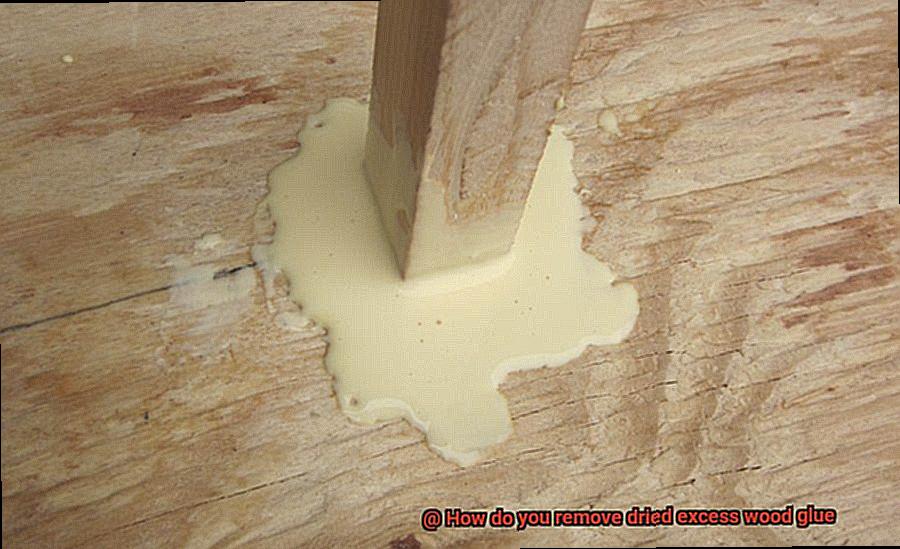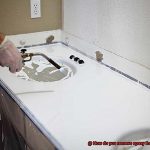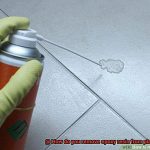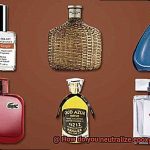Are you a woodworking enthusiast who loves creating beautiful and functional pieces? If so, you know that proper gluing is essential to ensure a strong and lasting structure. But what happens when excess glue dries on your project, ruining its appearance and making it impossible to remove with traditional tools?
You might be tempted to use harsh chemicals or risky methods that could damage your wood or even harm your health. However, fear not. There are some simple and safe ways to get rid of dried excess wood glue without using any toxic substances or expensive equipment.
In this blog post, we’ll explore the best techniques for removing dried excess wood glue from your projects. From vinegar and a scraper to sanding and even bread – yes, bread. – we’ve got you covered with easy-to-follow instructions and helpful tips.
Whether you’re an experienced woodworker or just starting out, these methods will help you achieve a flawless finish on your next project. So let’s dive in and learn how to say goodbye to dried excess wood glue once and for all.
Scraping or Sanding: How to Remove Dried Excess Wood Glue
Contents
- 1 Scraping or Sanding: How to Remove Dried Excess Wood Glue
- 2 Heat Method: Using Hot Air Guns or Hairdryers to Remove Dried Excess Wood Glue
- 3 Chemical Solution: Commercial Glue Removers for Dried Excess Wood Glue
- 4 Last Resort: Sanding Down the Affected Area and Reapplying the Glue
- 5 Considerations When Removing Dried Excess Wood Glue
- 6 Types of Glues and Their Effect on Removal Process
- 7 Different Surfaces and Their Effect on Removal Process
- 8 Tools Needed to Remove Dried Excess Wood Glue
- 9 Conclusion
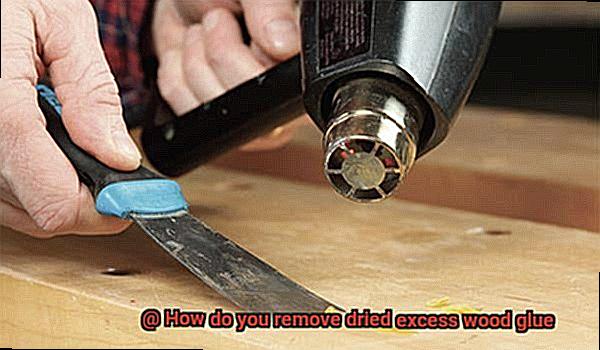
When it comes to woodworking, removing excess dried wood glue is an essential step in achieving a professional finish. Fortunately, there are several effective methods for removing dried excess wood glue, including scraping and sanding.
Scraping is a simple and efficient process that involves using a scraper or putty knife to gently remove the glue residue. This method is ideal for small areas or tight spaces where sanding may not be possible. To scrape off the glue, you need to position the blade of your scraper at a shallow angle and apply a firm but gentle pressure. With patience and skill, repeat the process until you have successfully removed all the excess glue.
On the other hand, sanding is a more time-consuming method that involves using sandpaper or a sanding block to grind down the dried glue until it is level with the surrounding surface. While sanding can be used to remove large areas of dried glue quickly, it can also be messy and require additional clean-up.
To determine which method to use, consider the size of the area that needs to be cleaned, as well as the type of wood and glue used. For delicate or thin wood, scraping may be the better option as it is less likely to cause damage to the surface. However, if you are working with a larger area or if the glue has hardened completely, sanding may be more effective.

If these methods fail, you can also try using heat or chemical solutions. Applying heat with a hot air gun or hairdryer can soften hide glue or epoxy glue for easier removal with a scraper or sandpaper. Chemical solutions like commercial glue removers contain solvents that dissolve the glue residue without damaging the wood surface.
Heat Method: Using Hot Air Guns or Hairdryers to Remove Dried Excess Wood Glue
If you’ve ever found yourself frustrated with dried excess wood glue, fear not. The heat method is here to save the day. This technique involves using hot air guns or hairdryers to soften the glue, making it easy to remove without damaging the wood surface.
To begin, gather your materials: a heat gun or hairdryer with a high heat setting, protective gloves, and eye goggles. Hold the tool about 2-3 inches from the glued area and direct the hot air towards the glue. Move the tool back and forth over the glued area until you see the glue start to soften.
Once the glue has softened, use a scraper or putty knife to gently remove the excess glue. Be sure to proceed with caution so you don’t damage your project in the process. If the glue is still sticking around, repeat the heating process until it softens further.
It’s important to note that this method should be used with care as excessive heat can damage your wood surface. Before applying heat to larger areas, test a small section first. And always wear protective gear like gloves and goggles.
In summary, using a heat gun or hairdryer to remove dried excess wood glue is an effective and efficient method that can save you time and hassle. Keep these tips in mind for your next DIY project:
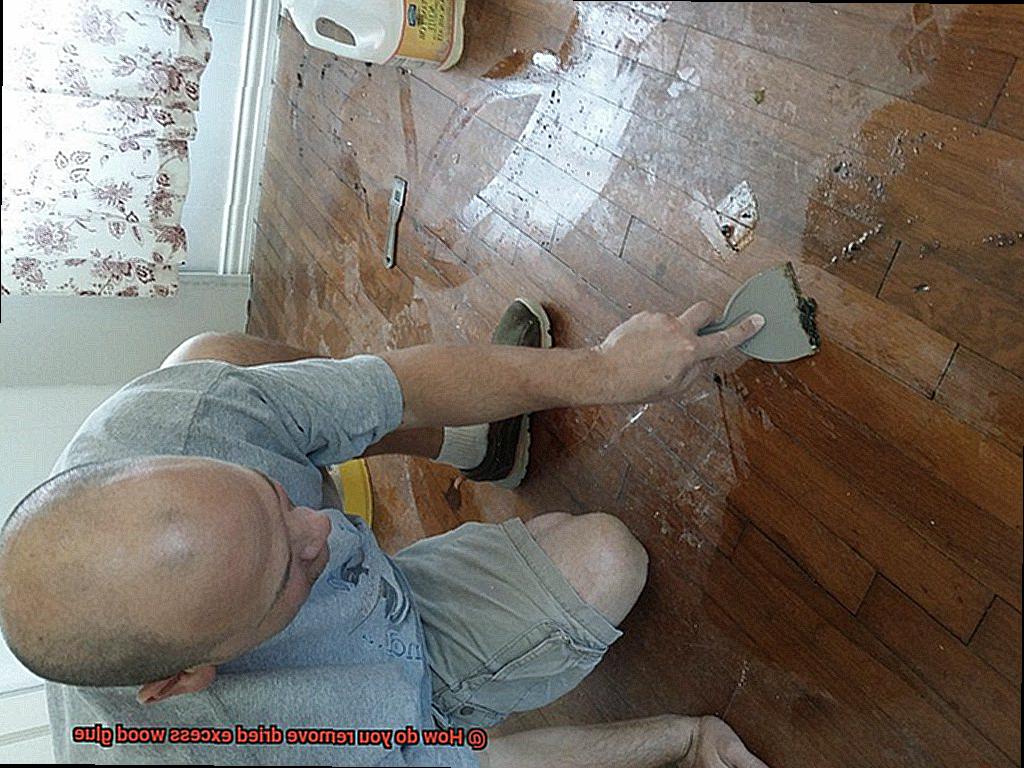
- Gather materials: heat gun/hairdryer, protective gear
- Hold tool 2-3 inches from glued area
- Move back and forth until glue begins to soften
- Gently scrape off excess glue with scraper/putty knife
- Repeat process if necessary
- Test small area before proceeding with larger areas
- Wear protective gear

Chemical Solution: Commercial Glue Removers for Dried Excess Wood Glue
Say goodbye to the pesky problem of dried excess wood glue ruining your projects with the help of chemical solutions. As an expert on the subject, I can tell you that commercial glue removers are the most effective way to remove dried excess wood glue, and there are multiple options available.
One popular choice is acetone. This powerful solvent can dissolve many types of adhesives, including dried excess wood glue. However, it’s essential to exercise caution as acetone can also dissolve certain finishes or paint. Therefore, it’s crucial to follow the manufacturer’s instructions when using any chemical solution.
Another effective option is denatured alcohol. This alcohol-based solution can effectively dissolve and soften dried excess wood glue. However, it is highly flammable and should only be used in a well-ventilated area.
For those looking for a more targeted solution, specialized glue removers specifically designed for removing dried excess wood glue can also be used. These products often contain a combination of solvents and other chemicals that work together to soften and dissolve the glue. They can provide the best results, but again, it’s always important to follow safety instructions provided by the manufacturer.
When using any type of chemical solution to remove dried excess wood glue, it’s crucial to protect yourself by wearing gloves and eye protection and working in a well-ventilated area. It’s also essential to test the product on a small, inconspicuous area first to ensure that it doesn’t damage the wood or any finishes or paint on the surface.
Last Resort: Sanding Down the Affected Area and Reapplying the Glue
In this post, we will discuss the last resort method of sanding down the affected area and reapplying the glue.
Before diving into this method, it’s important to note that this should only be used when all other options have failed. While it can be effective in removing excess glue, it can also be time-consuming and may result in changes to the appearance of the wood.
To start, make sure you have all necessary protective gear. Sanding can produce harmful dust particles, so it’s crucial to wear a mask and gloves. Begin by using a coarse-grit sandpaper to sand down the affected area. This will remove excess glue and prepare the surface for reapplication. Switch to a finer-grit sandpaper to smooth out any roughness.
After sanding, clean the area thoroughly with a damp cloth to remove any leftover dust or debris. Then apply a fresh layer of wood glue to the affected area, making sure not to use too little or too much glue. Using an appropriate amount of glue is key as too little may result in weak bonds and too much may cause visible clumps or bumps.
Now comes the clamping part. Clamp the wood together tightly and let it dry completely. The drying process may take several hours or even overnight, depending on the type of glue used. After drying, use fine-grit sandpaper again to smooth out any rough edges or bumps.
However, we must emphasize that this method should only be used as a last resort. As previously mentioned, sanding down the affected area can alter the appearance of the wood, and reapplying glue can be time-consuming and require additional materials. It’s always best to avoid excess glue in the first place by using just enough for the job at hand and wiping away any excess immediately.
Considerations When Removing Dried Excess Wood Glue
Removing dried excess wood glue may seem like a daunting task, but with the right considerations and precautions, it can be done efficiently and effectively. Here are some important things to keep in mind when removing dried excess wood glue:
- Type of Glue: Different types of wood glue require different methods of removal. For example, PVA or white glue can be removed with a damp cloth, while polyurethane glue may require a solvent-based remover. Always refer to the instructions on the glue bottle to ensure you use the correct removal method.
- Type of Wood: The type of wood that the glue has been applied to can affect how easy or challenging it is to remove excess glue. Porous woods like pine or cedar will require more effort to remove excess glue as it would have penetrated deeper into the wood fibers. In contrast, hardwoods like oak or maple are less porous and may require less effort to remove excess glue.
- Age of Dried Glue: The age of the dried glue is another important consideration. If left for an extended period, it may have become harder and more challenging to remove. In such cases, specialized tools or solvents may be necessary to soften the glue before removal.
- Safety Precautions: It’s crucial to take safety precautions when removing dried excess wood glue. Some removers can be harmful if inhaled or ingested; therefore, wearing protective gloves and goggles and working in a well-ventilated area is essential when using any chemicals.
Types of Glues and Their Effect on Removal Process
Woodworking is a beloved hobby for many, but it can be frustrating when excess glue is left behind. The type of glue used in woodworking projects can greatly impact the removal process. Here are six subtopics to help you understand the different types of glues used in woodworking and how to effectively remove them:
PVA or White Glue
PVA glue is a water-based adhesive that dries clear and is popular in woodworking. If excess PVA glue has been left behind, it can be removed relatively easily with warm water and a scraper or sandpaper. Dampen a cloth or sponge with warm water and gently rub the area until the glue softens and can be wiped away.
Polyurethane Glue
Polyurethane glue dries hard and can be challenging to remove once it has dried. Solvents such as acetone or mineral spirits may be necessary to break down the hardened glue before it can be scraped away with a putty knife or sanded off. It’s crucial to exercise caution when using solvents as they can damage the wood surface.
Epoxy Glue
Epoxy glue is a two-part adhesive that dries hard and creates a strong bond between surfaces. If epoxy glue has dried on a surface, it can be challenging to remove without using specialized solvents or tools. One method for removing dried epoxy is to use heat to soften the glue before scraping it away.
CA or Superglue
CA glue is a fast-drying adhesive that forms a strong bond quickly. If CA glue dries on a surface, it can be challenging to remove without damaging the surrounding material. To remove dried CA glue, you can use acetone or nail polish remover to soften the glue before gently scraping it away.
Commercial Glue Removers
If you prefer a chemical solution, there are several commercial glue removers available in the market. These products contain solvents that dissolve the glue residue without damaging the wood surface. However, it is essential to choose a product that is safe for use on wood surfaces and follow the manufacturer’s instructions carefully.
Sanding Down
In some cases, the dried excess wood glue may be too stubborn to remove using any of these methods. In such cases, it may be necessary to sand down the affected area and reapply the glue. However, this should be done only as a last resort as it can be time-consuming and may affect the overall appearance of your woodworking project.
Different Surfaces and Their Effect on Removal Process
However, different surfaces can pose unique challenges when it comes to the removal process. Porous surfaces, like unfinished wood or natural stone, are particularly susceptible to glue seepage and hardening. On the other hand, smooth surfaces such as glass or metal require careful consideration to avoid scratching or damage.
To tackle dried excess glue on porous surfaces, quick action is essential. A solution of warm water and vinegar can be an effective method to break down the glue and soften it for removal with a plastic scraper or putty knife. For smooth surfaces, however, abrasive materials must be avoided at all costs. Instead, using a specialized adhesive remover or solvent designed for the specific type of glue used can ensure safe and effective removal.
It’s important to note that different types of wood glue require different removal methods depending on their chemical composition and drying time. Some glues may even require stronger solvents for effective removal. By understanding the surface and type of glue being removed, you can determine the most effective removal method and protect your project from damage.
Tools Needed to Remove Dried Excess Wood Glue
Removing dried excess wood glue can be a daunting task, especially if you don’t have the right tools. But fear not. With the proper tools and techniques, you’ll have that excess glue removed in no time.
The first tool you’ll need is a razor blade or scraper. These tools are handy for removing larger clumps of dried glue from the surface of your woodwork. However, be cautious not to apply too much pressure or you risk scratching the wood. Once you’ve removed the larger chunks, it’s time to smooth out any rough spots left behind. Sandpaper is your go-to tool for this job. Remember to use fine-grit sandpaper to avoid damaging the wood.
If sanding isn’t doing the trick, it’s time to bring in the big guns: solvents. Acetone or mineral spirits can be used to soften dried glue, making it easier to remove. However, it’s important to use these solvents in a well-ventilated area and with appropriate safety precautions. Safety first, folks.
Another tool that can come in handy is a heat gun. A heat gun can also be used to soften dried glue, making it easier to scrape away. Be cautious not to use too much heat as this can damage the wood.
Chisels are also useful for removing excess glue from tight corners and hard-to-reach areas. Use them with care and precision to avoid damaging your woodwork.
Finally, don’t forget the humble damp cloth. A damp cloth can be used to wipe away excess glue during the gluing process and to clean up any remaining residue after the glue has dried.
y0Q3qZssOyY” >
Conclusion
Removing dried excess wood glue from your woodworking projects may seem like a daunting task, but fear not. With the right tools and techniques, achieving a flawless finish is within reach. From scraping and sanding to using heat or chemical solutions, there are safe and effective methods available.
It’s crucial to consider the type of glue used in your project as well as the type of wood and surface being worked on. Different glues require different removal methods, while porous surfaces may call for quick action to prevent hardened glue from seeping in.
When it comes to tools needed for removing dried excess wood glue, razor blades or scrapers are handy for larger clumps, while sandpaper is essential for smoothing out rough spots. Solvents like acetone or mineral spirits can also be useful but should be used with caution in a well-ventilated area.
By keeping these tips in mind and taking appropriate safety precautions, you can remove dried excess wood glue efficiently and effectively without damaging your woodworking project.

